While Windows Firewall can help keep your PC protected by controlling which apps and services can access your network, it can sometimes cause problems by blocking apps you want to connect to the internet. In such cases, you will have to check which apps Windows Firewall is blocking and then allow them to connect to the network.
Indications Windows Firewall is blocking an app
If Windows Firewall is blocking an app, you will see a security notification on your computer indicating the same. It will also give you the option to access the features that the firewall is blocking. In case such a notification does not appear, you can look for other signs that might indicate this, such as:
- A notification within the app that the firewall is blocking some of its features.
- Time-outs and connection errors.
- The program fails to connect to the internet.
- Features that require network connectivity do not work.
Check Windows Firewall's allowed apps list
To find out whether Windows Firewall is blocking an app, you can check its allowed apps list. Here you can see all the apps that the firewall blocks or allows on both public and private networks.
- Open the Start menu, type
firewalland click on 'Firewall and network protection'.

- When the Firewall and network protection page opens, click on 'Allow an app through firewall'.

- A new page will open showing a list of all the apps that Windows Firewall allows and blocks. Scroll and navigate to the app you think the firewall is blocking and check whether the 'Private' and 'Public' checkboxes are selected. If they are not, it means the firewall is blocking them.
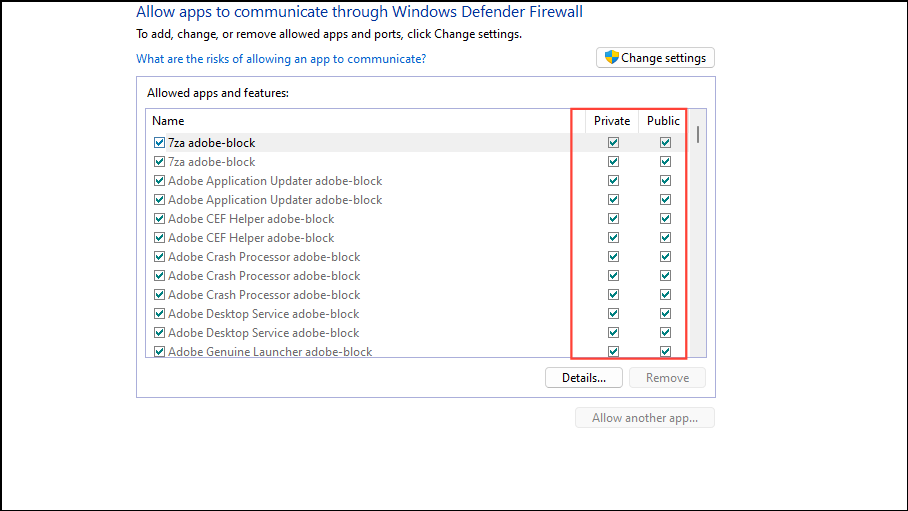
- To allow an app through the firewall, click on the 'Change settings' button at the top. You will require admin privileges to do so.

- Now click on the checkbox for the type of connection you want the app to access. If you want it to access both public and private connections, enable both the checkboxes for it and then click on the 'OK' button.
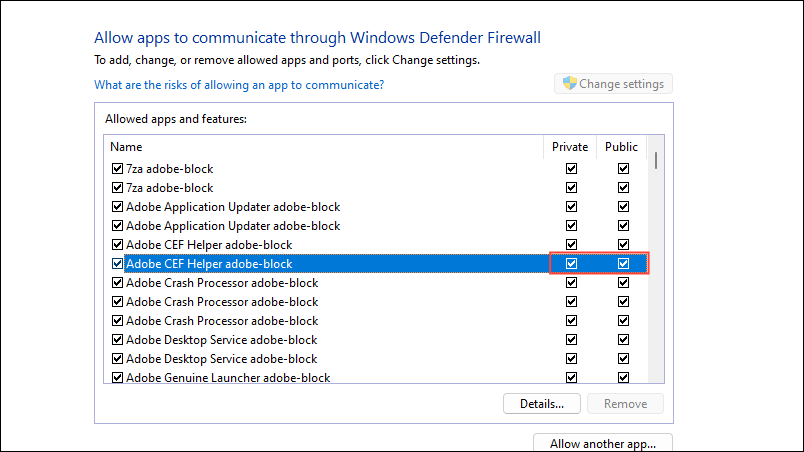
Check whether Windows Firewall is blocking a port
Besides applications, Windows Firewall can block ports preventing programs from relying on them from accessing the internet. Here is how you can check for those.
- Open the Start menu, type
windows defenderand click on 'Windows Defender Firewall' when it appears in the search results.
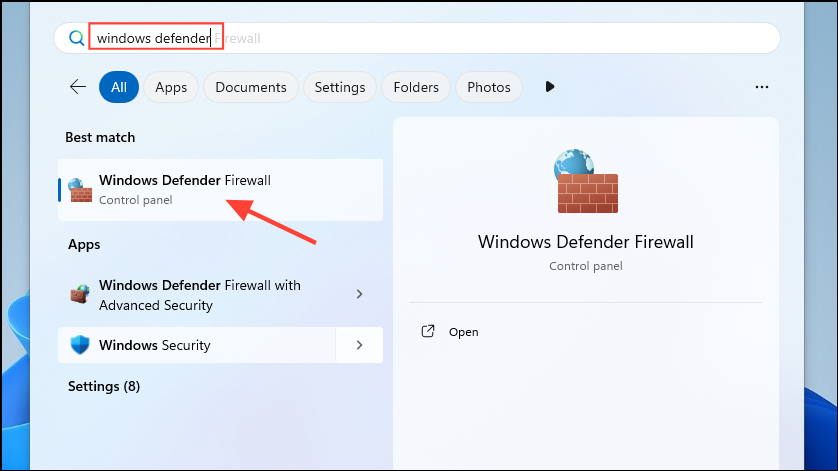
- When the Windows Defender Control Panel page opens up, click on 'Advanced settings' on the left.
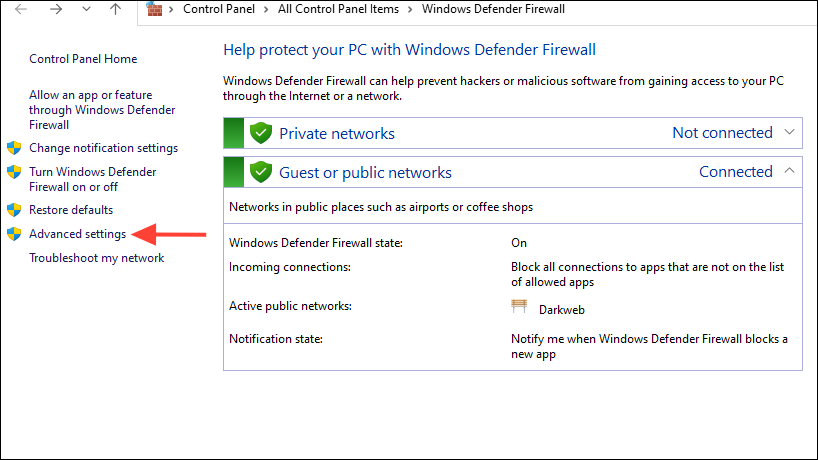
- In the new Windows Defender Firewall window, click on the 'Action' menu at the top and then on 'Properties'.
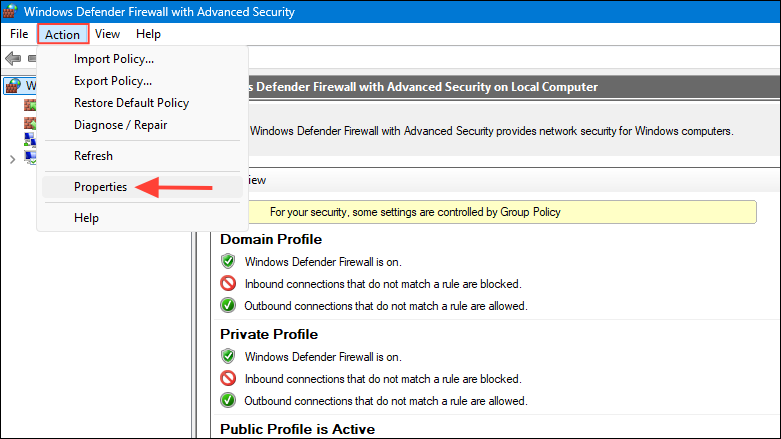
- Next, click on the 'Windows Defender Firewall Properties' link.

- The 'Domain Profile' tab will be selected by default. You can switch to another profile if it is your main profile. Then click on the 'Customize' button on the right of the 'Logging' section.

- Click on the 'Log dropped packets' dropdown menu and select 'Yes'.

- Copy the path in the 'Name' text box at the top and click on the 'OK' button to close the dialog box.
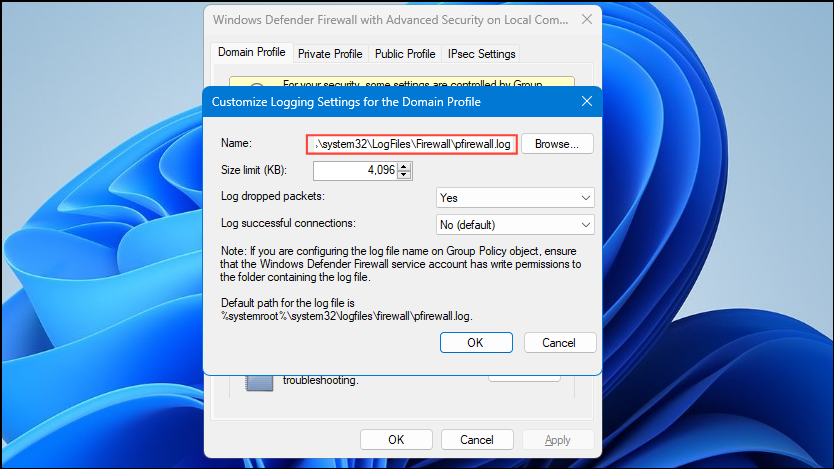
- Open the File Explorer and paste the copied path in the address bar at the top before pressing Enter. In the folder that opens, find and open the 'log' file to view all ports blocked by Windows Firewall.

Things to know
- Once you allow a program through Windows Firewall, the firewall will not only block it from connecting to the network but it will also allow malicious entities from accessing it.
- Check and make sure that programs that you allow through the firewall are trusted programs before doing so, otherwise your system will become exposed to various threats.
- Avoid installing or allowing apps that you are not sure about. You can also use other features like Smart App Control in Windows to protect your system.


